Coffee may not be your favorite drink, but caffeine is sometimes necessary to stay awake throughout the day. You might also find yourself stuck in a coffee shop for a business meeting or study group, dreading the challenge of deciding what to order.
Perhaps your coffee journey just started on the wrong foot. The pre-ground coffee available at grocery stores is not necessarily the highest quality. As a result, you might be tempted to use a lot of sugar or cream to disguise a stale or burned flavor in your coffee. However, trying the best coffee for non-coffee drinkers might change your mind about coffee.
Classic coffee options for non-coffee drinkers
The menu of a coffee shop can be overwhelming, even if you like coffee. Knowing where to start trying new things can be hard, and the baristas might sometimes be too busy to answer your questions.
For some who don’t like coffee, drinks containing espresso and milk may have just the right amount of separation from the sourness or bitterness of black coffee. Also, while not everyone tolerates dairy well, most coffee shops have substitutes like nut or oat milk available, if you ask.
An espresso made of freshly ground coffee might have a better flavor than batch-brewed coffee, which can acquire a bitter taste if it sits too long. Even if espresso-based drinks don’t appeal to you, a straight shot of espresso in a specialty coffee shop could be worth a try if you think you hate coffee.
A specialty cafe may use higher-quality coffee beans than you usually use when buying ground coffee in a supermarket. It will likely make a difference in your enjoyment of a coffee drink. Don’t hesitate to chat with a barista and ask questions about the difference between coffee beans and roast levels. Just like Argentinian Malbec tastes different from French Pinot Noir, different origins of coffee beans have distinct flavors. Also, in specialty cafes, you can discover whether you prefer light roast or dark roast coffee.
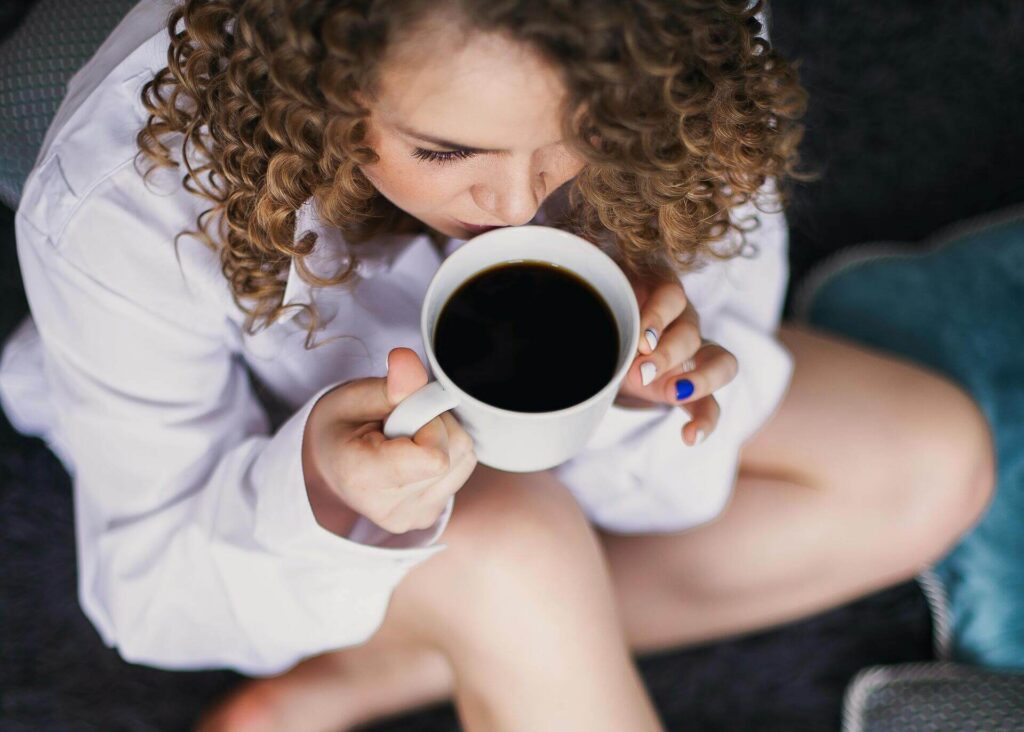
Caffé latte
Of the espresso-based drinks, caffé latte has the biggest milk-to-coffee ratio. A small latte is made in an eight-ounce cup with one shot of espresso and enough steamed milk to fill the rest of the cup. Lattes may also be flavored with different syrups.
A large caffé latte might have two espresso shots and a larger quantity of milk to fill a tall glass. The ratio of milk to coffee is usually one-third espresso and two-thirds milk with a thin layer of froth on top, but the milk amount can slightly vary when aiming to fill up a glass. Experienced baristas can create latte art by pouring love hearts, swans, or other creative drawings with foam.
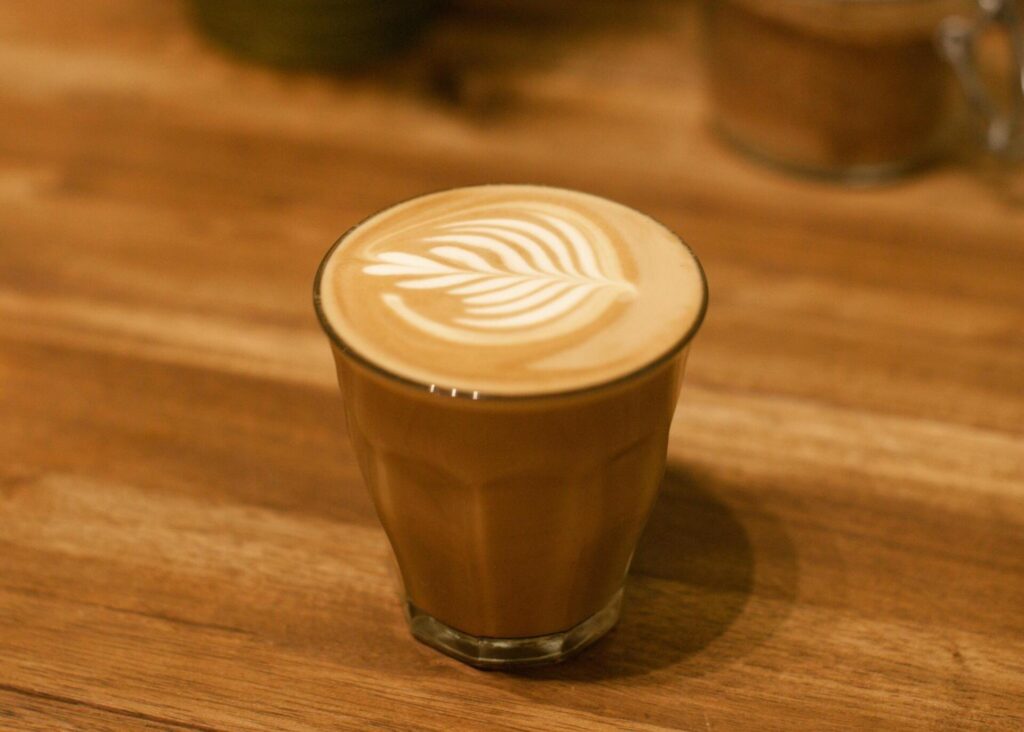
Mocha
Caffé mocha is synonymous with the combination of coffee and chocolate. However, not many people know that this coffee drink originated in the city of Mocha in Yemen, an early coffee trade center.
A mocha drink combines espresso, hot milk, and chocolate. The chocolate for this drink can be either cocoa powder or dark chocolate syrup.
Simply put, a mocha is a hot chocolate with an added espresso shot, making it more appealing to non-coffee drinkers. Like hot chocolate, a mocha can be topped with whipped cream. You can also come across variations of mocha coffee that contain dark or white chocolate.
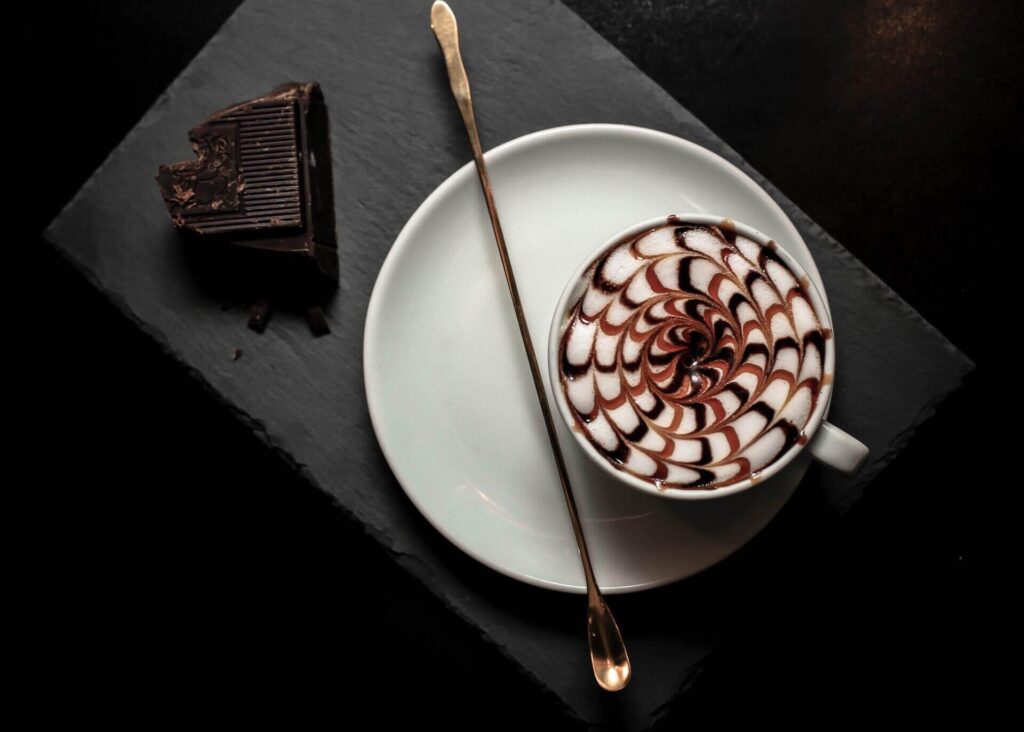
Cappuccino
While the same ingredients are used for preparing cappuccino for a latte, it has less milk and more foam. In fact, a variation of this coffee drink called bone dry cappuccino does not contain liquid milk at all, only milk froth. Classic cappuccino’s espresso-to-milk ratio is usually one-third espresso, one-third steamed milk, and one-third frothed milk foam.
Generally, cappuccino does not contain added sugar, but grated or powdered chocolate is often dusted on top of it. Sprinkling ground cinnamon or even cardamom (the tradition popular in Sweden) on top of a cappuccino is another coffee flavoring alternative that does not add extra calories.
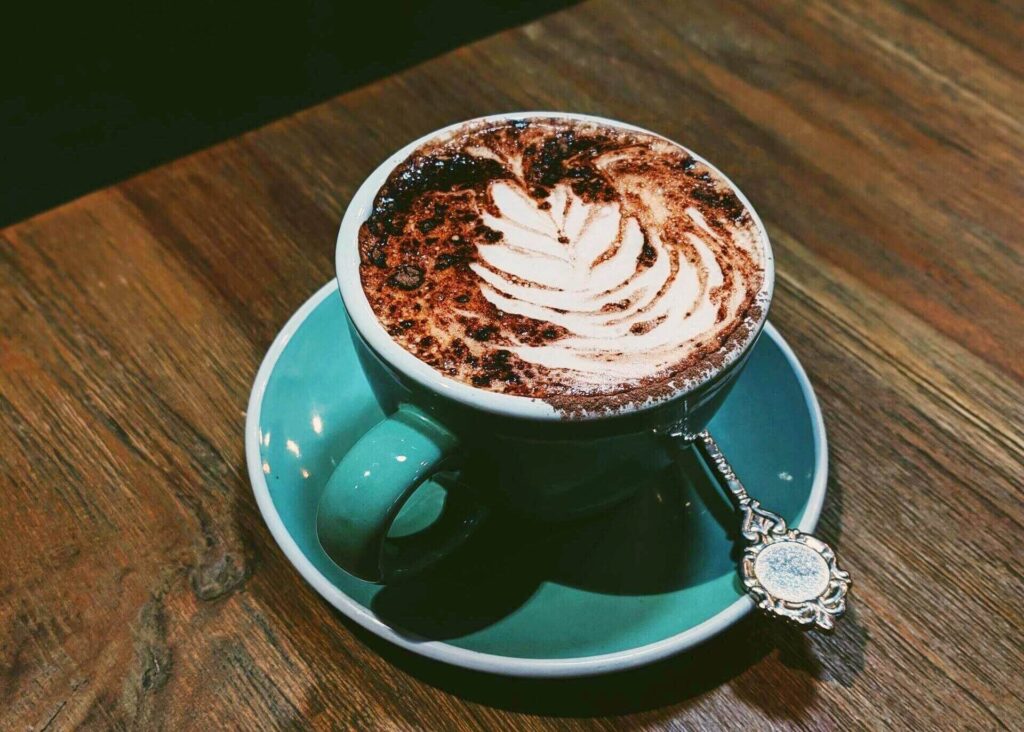
Flat white
The flat white first became popular in Australia and New Zealand, but it has quickly gained immense popularity worldwide. A flat white is sometimes described as a cross between a latte and a cappuccino. The ratio is usually one-third espresso, sometimes two shots, to two-thirds milk. However, flat white contains less milk than a caffé latte. It also has less foam than a latte, and the name “flat” comes from the flatness of the foam.
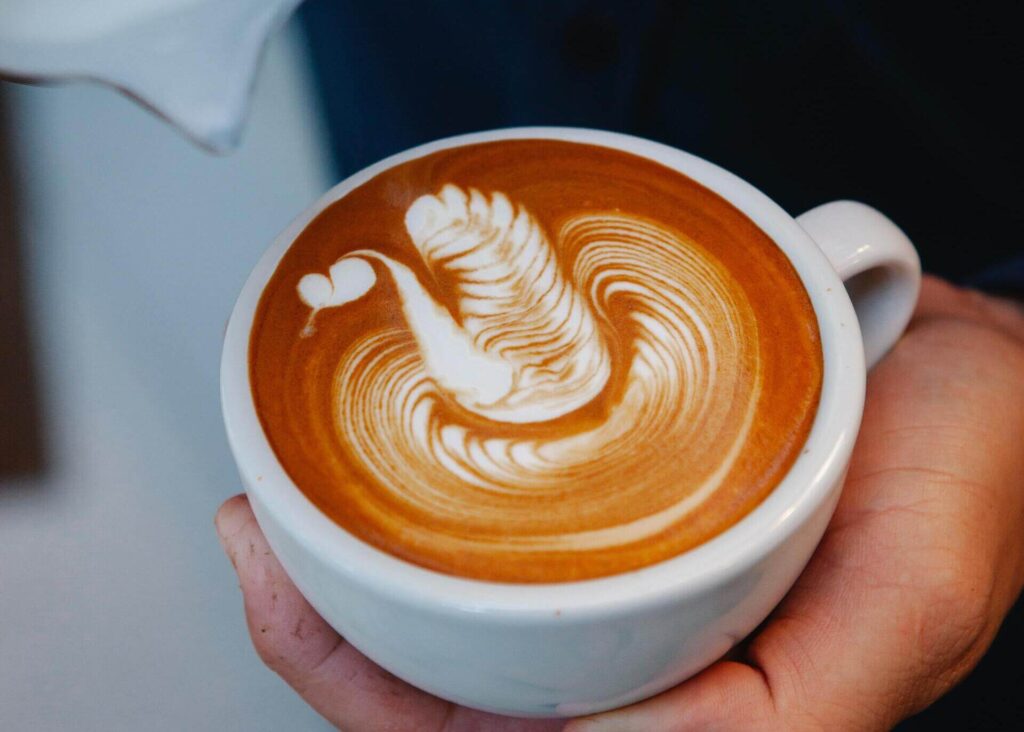
Macchiato
A macchiato is an espresso drink with only a little foamed milk. Of all the espresso drinks described so far, the macchiato has the smallest ratio of milk to espresso. The word “macchiato” means “marked” in Italian, so think of it as the espresso shot marked by a splash of milk. It is usually served in a demitasse cup, as there is no large volume of liquid.
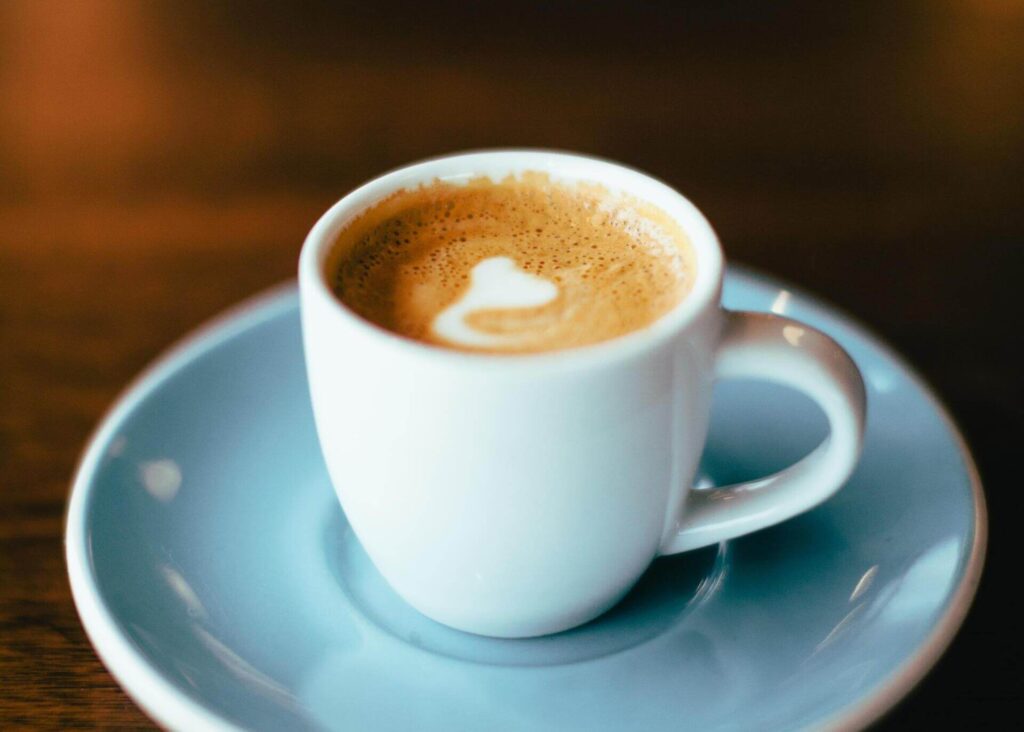
Flavored coffee drinks for non-coffee drinkers
Some first-time coffee drinkers find flavored milky coffee drinks more appealing than bitter black coffee. While pure black coffee might not be for everyone’s taste, flavored coffee drinks are a special treat closer to a dessert.
Flavored lattes are also an opportunity for coffee shops to show their creativity with unique seasonal menu items. Here are some of the more popular options in the local cafes.
French vanilla latte
The term “French vanilla” was initially created to describe a vanilla custard or ice cream containing egg yolks and vanilla extract. The smooth and creamy flavor combination became a success, so coffee shops started using syrups to introduce it into their coffee drinks.
If you are a fan of vanilla-flavored desserts, a French vanilla latte might be just for you. It usually contains vanilla and hazelnut syrup, adding sweetness and a rich nutty flavor to your coffee.
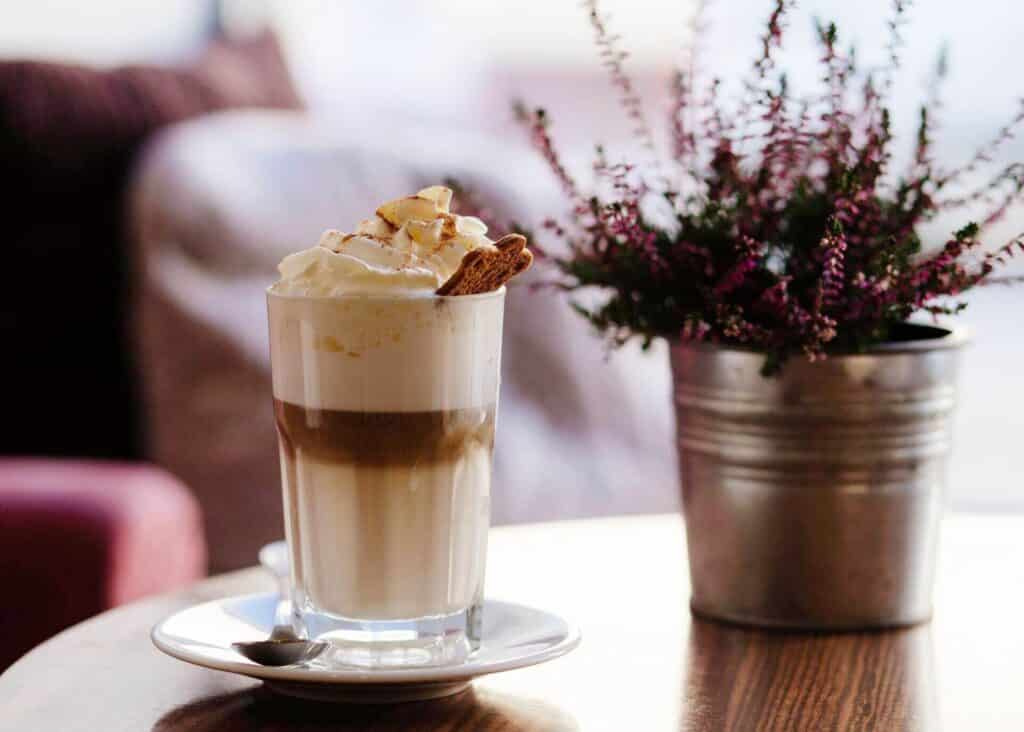
Caramel macchiato
Starbucks invented the caramel macchiato to celebrate the coffee company’s 25th anniversary in 1996. It has more milk than a traditional macchiato, caramel syrup, or caramel sauce. While this drink is available in many coffee shops and chains, you can make hot or cold caramel ice macchiato at home. According to the Starbucks recipe, you start with vanilla syrup at the bottom of your mug and add frothed milk. Then, pour a strong coffee shot made with an espresso machine or Moka Pot and top it up with caramel sauce.
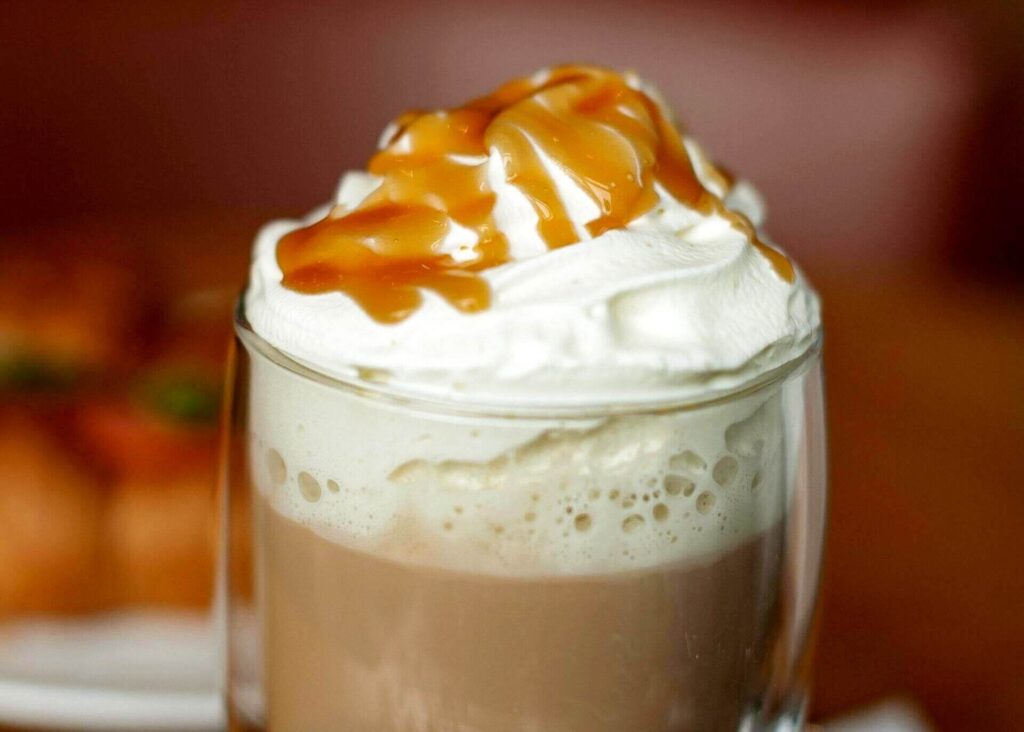
Hazelnut latte
Hazelnut is one of the most popular coffee flavors. Even hazelnut-flavored coffee beans are available, and you might find that it helps you enjoy black coffee more. While some people hate flavored coffee beans, they may be a good fit for non-coffee drinkers who want coffee that doesn’t taste like coffee.
A hazelnut latte is a coffee drink that incorporates hazelnut-flavored syrup, the usual steamed milk, and a shot of espresso. Variations on the hazelnut latte include the chocolate hazelnut latte, made with chocolate syrup or chocolate spread like Nutella.
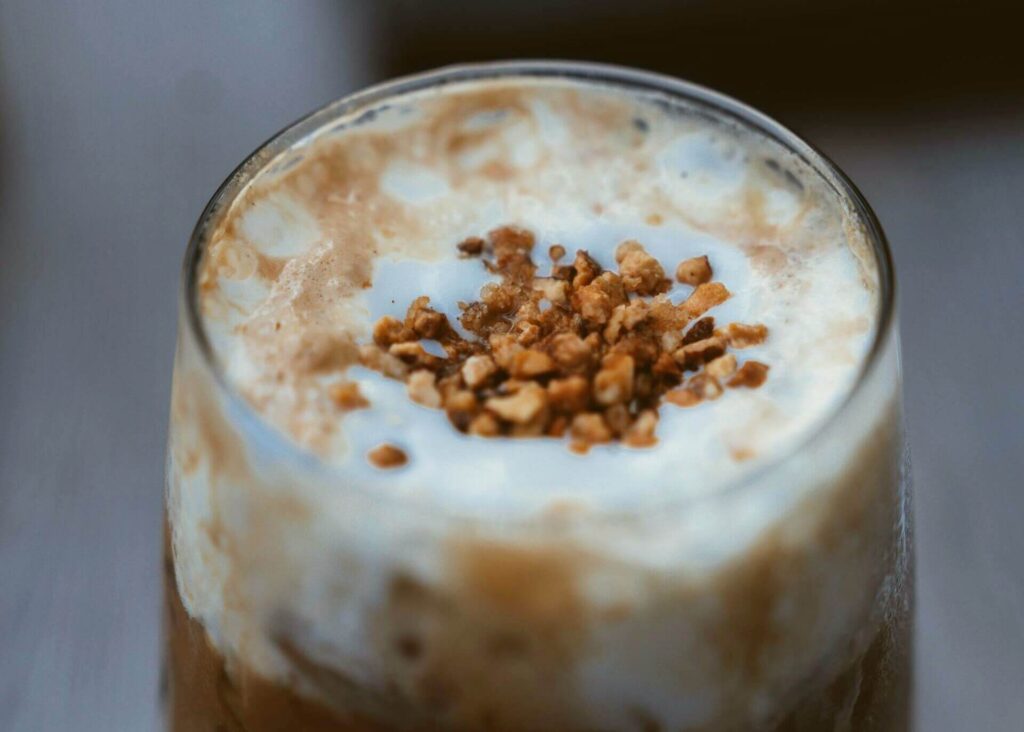
Pumpkin spice latte
A pumpkin spice latte is a popular autumn option. Starbucks introduced it in 2003 as a seasonal drink, and other coffee chains have imitated it.
Many versions of the pumpkin spice latte, including the Starbucks version, add a little bit of pumpkin puree to the coffee for extra richness and creaminess. The spice mix used for the pumpkin spice latte usually includes cinnamon, nutmeg, ginger, and clove — similar to what you would find in a pumpkin pie. In addition, a pumpkin spice latte is often topped with whipped cream.
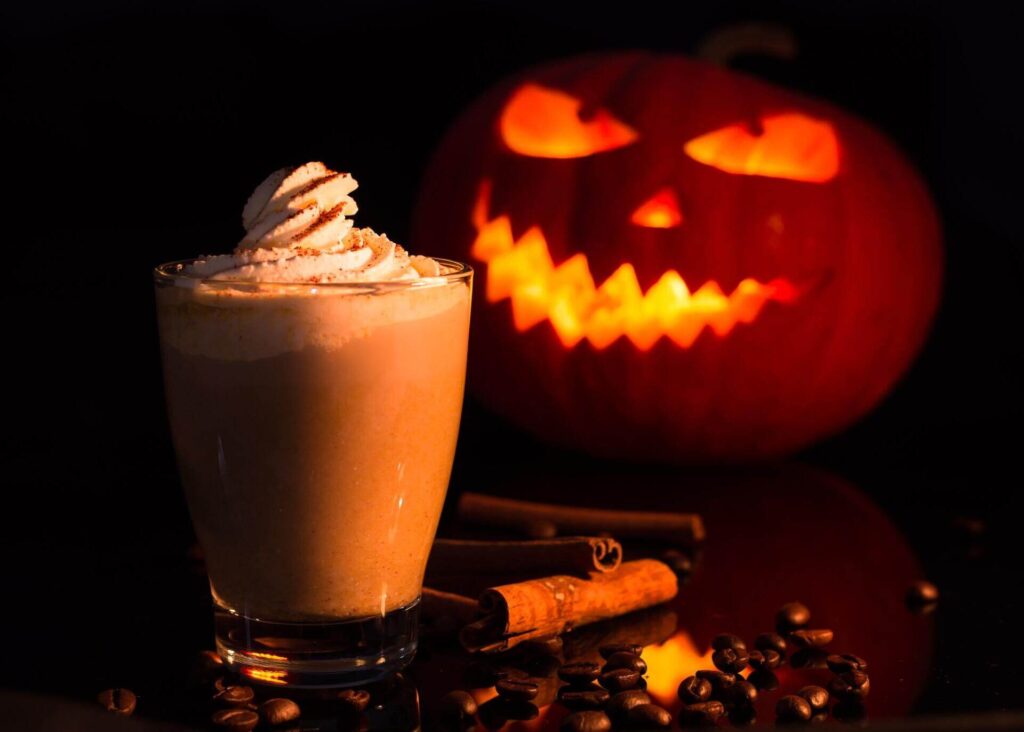
Peppermint mocha
After pumpkin spice latte season comes peppermint mocha season, which reminds of Christmas candy cane. Some versions of this coffee drink, such as the Starbucks version, contain peppermint syrup and the standard mocha ingredients like chocolate syrup, steamed milk, and espresso. However, some cafes add crushed candy cane pieces to mocha for peppermint flavor. Whipped cream completes this seasonal mocha coffee drink well.
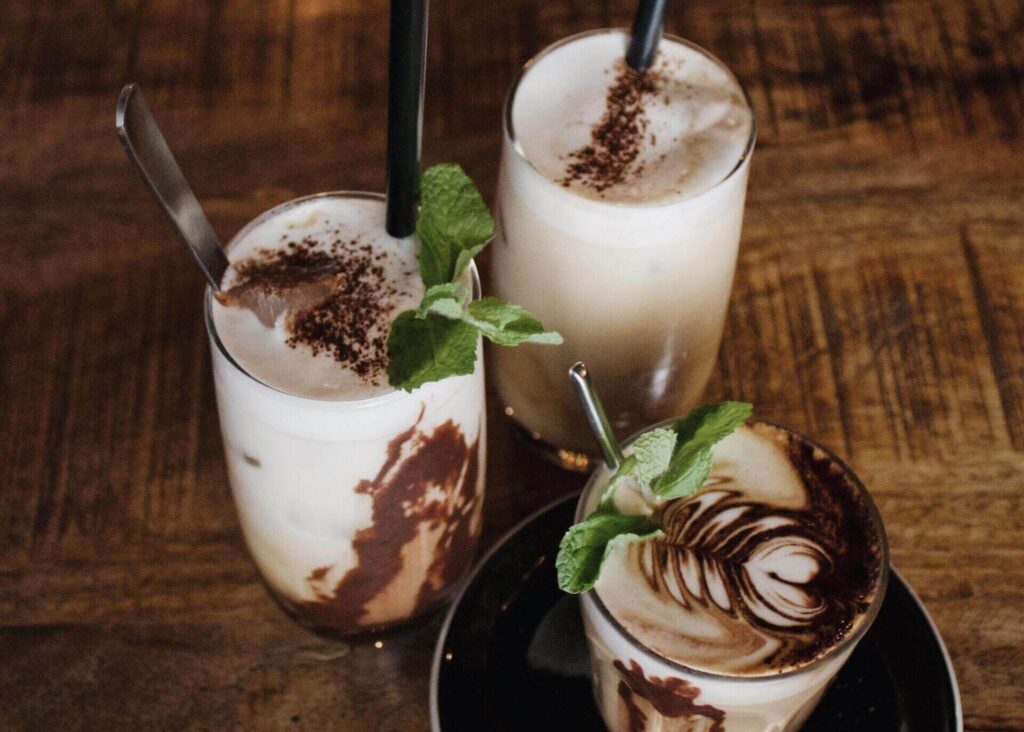
Cold coffee options for non-coffee drinkers
The coffee taste may not be the only reason you want to try something other than a plain black cup of coffee. You might want a drink that’s cold instead of hot coffee. Fortunately, most cafes have plenty of cold coffee drinks available. Some are solidly recognizable as coffee, while others remind me of milkshakes.
Frappuccino
The frappuccino is partially named after the frappe, which is essentially a milkshake with ice cream. While many cafes now use ice cubes and whipped cream, a frappuccino retains that dessert vibe. Frappuccinos are also generally sweetened with sugar or flavored syrups to the point that many don’t even taste like coffee.
At Starbucks, some frappuccinos contain coffee, and some do not. They do a good job identifying caffeine-free options on the menu to get what you want without confusion. After all the condiments are added, those containing coffee often have a subtle flavor. You will hardly taste any coffee bitterness with sugar and whipped cream.
Cafes that make frappuccino often have a selection of flavoring options, making it one of the best drinks for non-coffee drinkers.
Be aware that a frappuccino can have a much higher calorie count than a standard cup of coffee. This may be just what you need if you are recovering from dental work and can’t eat normally. However, if you watch your weight, you might want to enjoy frappuccinos in moderation.
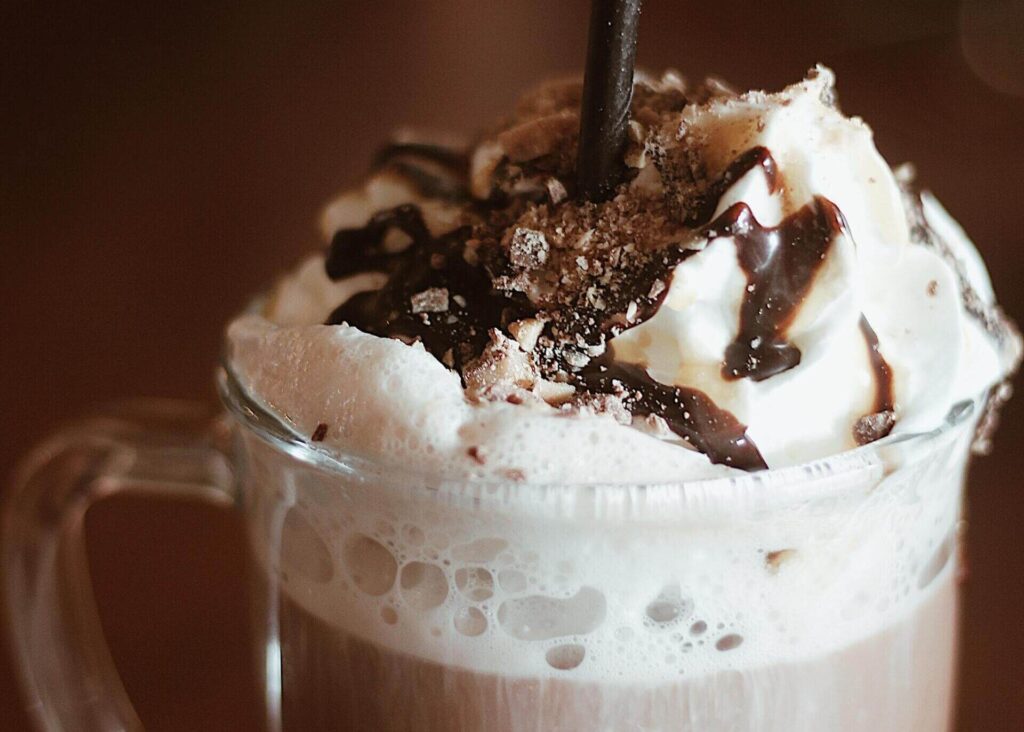
Iced latte
An iced latte contains the same essential ingredients as a hot latte: espresso and milk. However, they are poured over a base of ice cubes. As the goal is to keep the drink cold, there is no need to use steamed milk. Instead, cold milk is frothed and added to the iced latte. A handheld milk frother or an electric milk frother with a cold frothing feature will help you achieve that.
Milk goes first into the glass, followed by an espresso shot so the heat of the coffee will not dissolve the ice cubes too much and make your coffee watery.
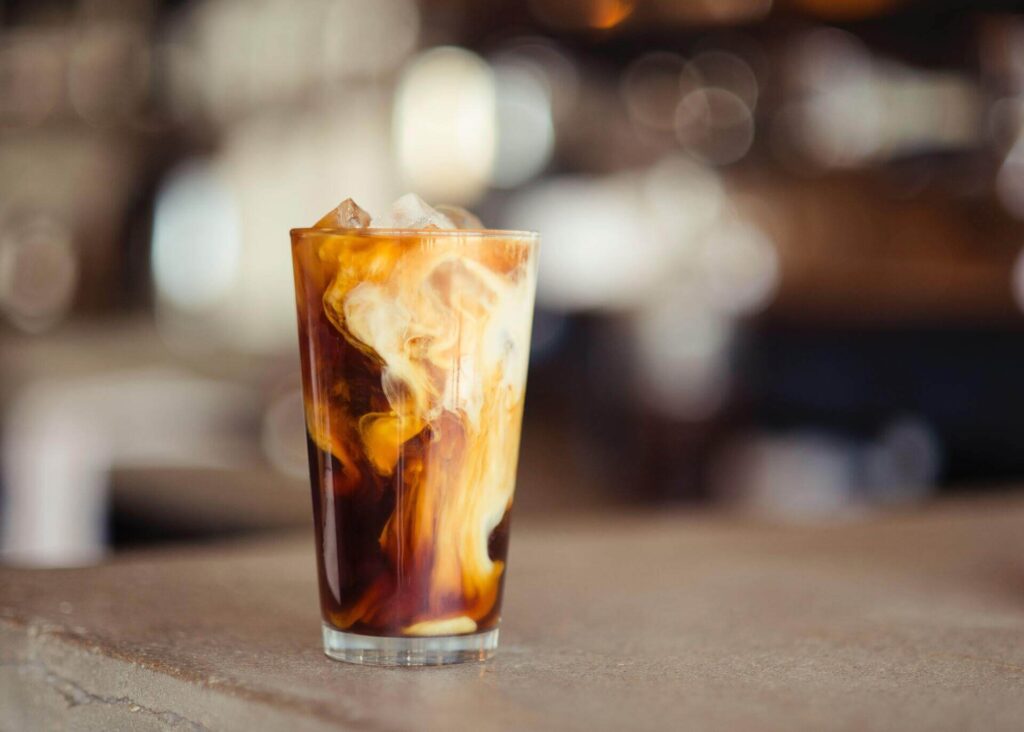
Cold brew
While iced coffee is just regular brewed coffee with added ice, cold brew requires a different method. It is made by infusing coarse-ground coffee with cold water, which can take several hours.
Some people find that cold brew coffee tastes like black tea with a soft flavor. It can also be sweeter than regular coffee and usually does not taste burnt, as no heat is used during brewing.
Cold brew coffee is more concentrated than drip coffee, which is sometimes diluted with water before serving. Pouring it over ice cubes can have the same effect. A slice of orange is often added to compliment the flavor of the cold brew.
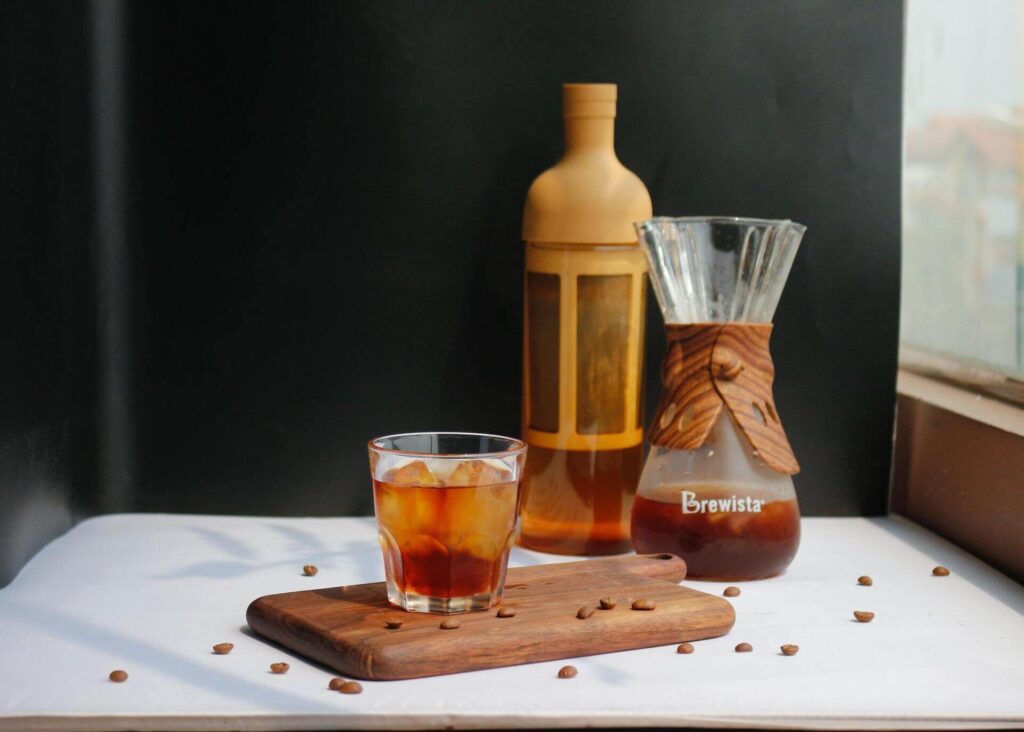
Nitro coffee
Nitro coffee is made by putting cold brew in a special keg and infusing it with nitrogen gas to give it a head of foam, similar to what you would find in a glass of Guinness. Nitro coffee may be the perfect choice for stout fans, as its consistency and taste are very similar.
Nitro coffee is generally not served over ice, as that would dilute the smooth texture of the drink and disrupt the foam. Adding milk or sugar could also interfere with the foam, but you might not want to. The nitrogen makes the coffee sweeter than it would otherwise be and gives it a creamy texture. Some coffee shops also make a nitro cold brew pre-mixed with sweet cream before it is served.
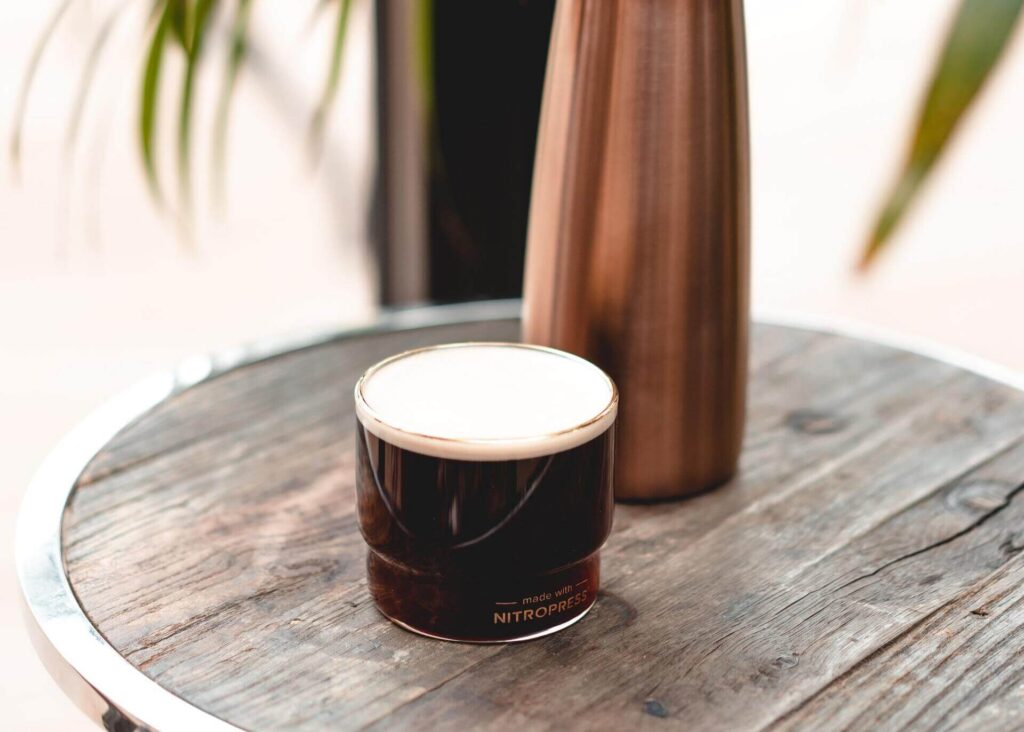
Caffeine-free alternatives for non-coffee drinkers
Even with all the condiments in the world, you might not like coffee or have a health problem preventing you from caffeine consumption. However, this should not discourage you from socializing with your friends or working in a coffee shop now and then.
Fortunately, almost every coffee shop has considered customers who do not drink coffee. Herbal tea is often a safe bet for someone who is not a coffee drinker. Still, other beverages made without coffee match the craft of fancy espresso drinks.
Chai latte
A chai latte is a spicy, milky drink that originated in India, where it’s called masala chai. It is made of black tea, milk, sugar, and spices. The spice combination may vary, but it usually includes ginger, cinnamon, and cloves. You can get chai on the roadside or from the market stalls in India, where it’s boiled in huge pots.
People began adding milk to chai tea in the 1800s due to British colonial influence in India. However, chai lattes did not reach coffee shop menus until the 1990s.
In cafes, a chai latte is usually prepared with pre-mixed chai powder. Like anything else made with black tea, a chai latte has a little caffeine but much less than a caffé latte.
If you can not tolerate caffeine, avoid a dirty chai latte, as it is made with an additional shot of espresso.
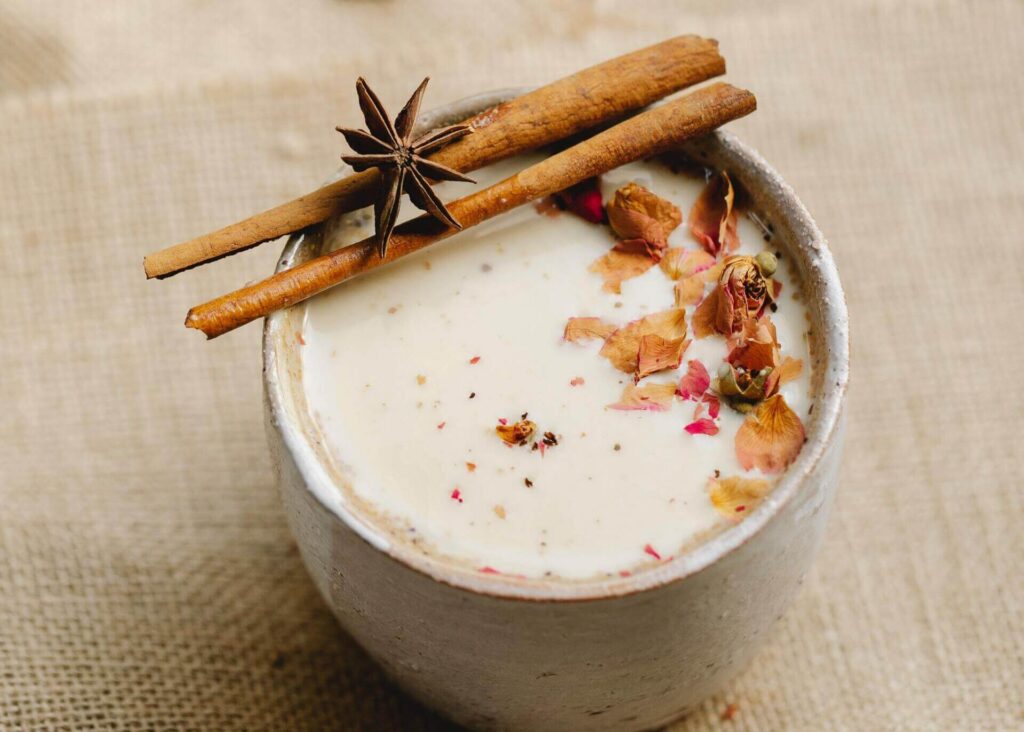
Matcha latte
Matcha latte – a drink made of dissolved matcha green tea powder and steamed milk – took the coffee shops by storm and quickly became a favorite alternative to those trying to cut down on caffeine.
While a matcha latte has some caffeine, its content is less than in a latte made with espresso (or a dirty matcha latte made with espresso). Green tea can have some bitterness to its flavor, but it has a lightness that coffee generally lacks.
Matcha latte powder mix often comes sweetened to temper the bitterness of the green tea. So if you don’t want any sugar in your drink, you better check it with the barista before placing your order.
A nice bonus is that if your barista feels creative, they can make latte art with the bright green base of the matcha.
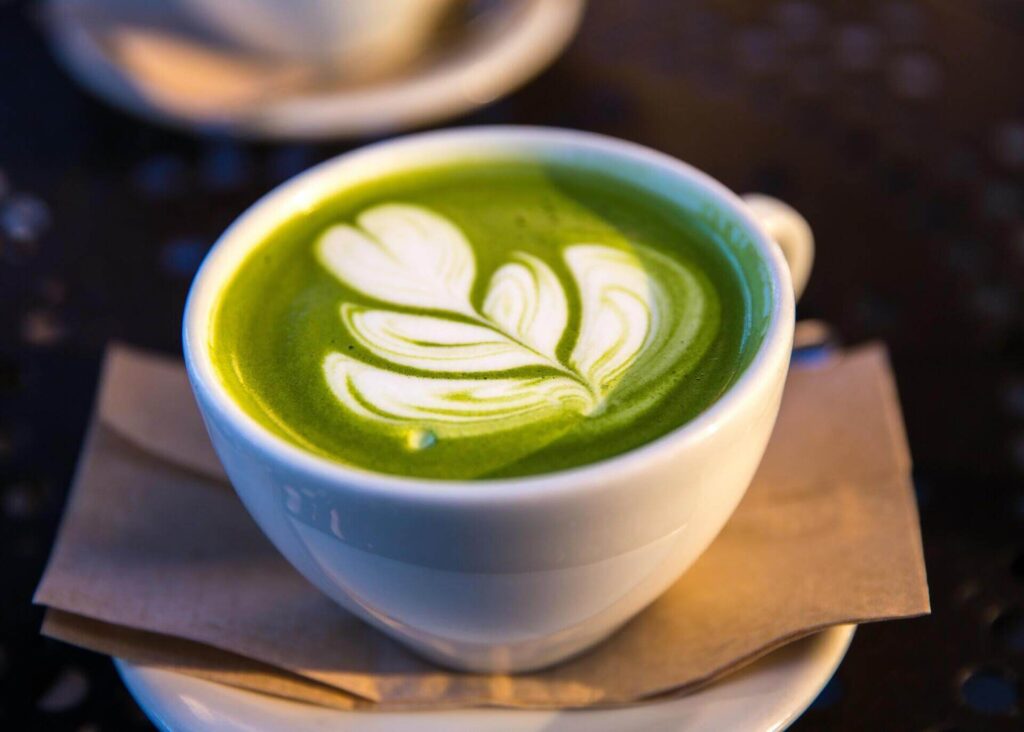
Pink latte
The pink latte is not as popular as the matcha latte but has been growing. This drink is caffeine-free and compatible with different paleo and vegan diets.
The base of the pink latte is dried beetroot powder. When mixed with a little bit of water, it replaces the espresso shot in your drink. Then, steamed milk is poured into the cup, just like any other latte. If you want your pink latte to be vegan, you can ask for plant-based milk, like oat, almond, or cashew. Beets naturally have a nutty sweetness, but a beetroot latte can be sweetened with maple syrup or another sugar equivalent as desired.
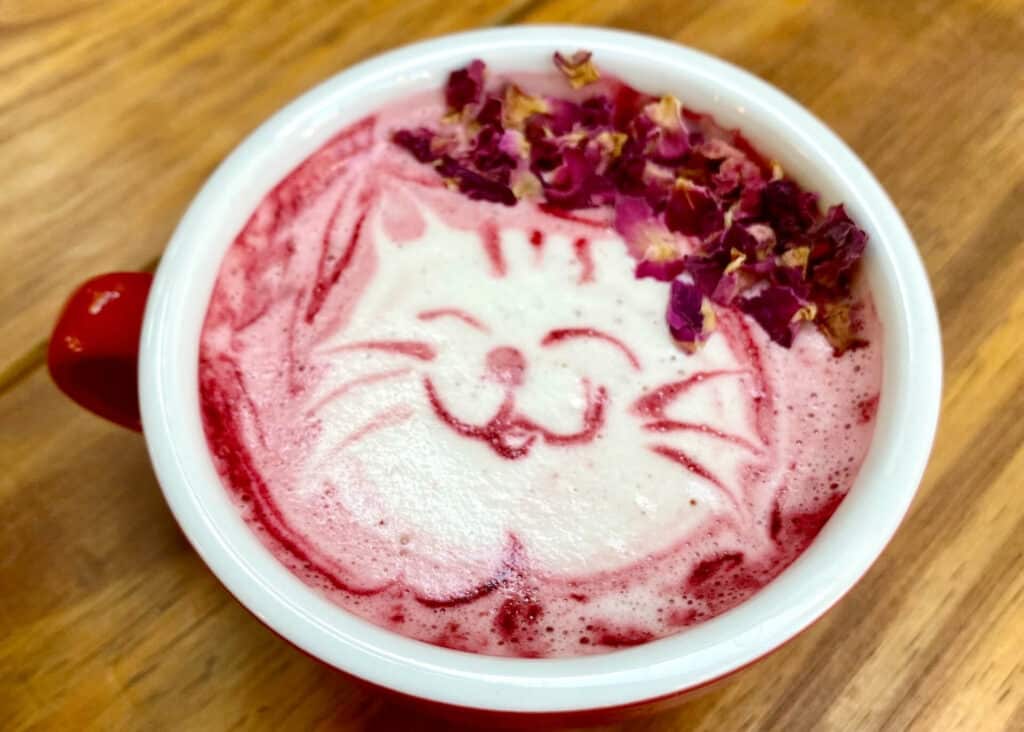
Golden latte
A golden latte is a concoction starring turmeric powder, known for its health benefits, such as anti-inflammatory and antioxidant effects. Other spices, such as ginger, may also be added to the mix. The turmeric powder is mixed into milk and heated. For golden lattes, almond milk is a popular non-dairy substitute. You can add sugar or another sweetener if you want.
Some versions of the golden latte may include a shot of espresso, including one that Starbucks has offered at selected locations.
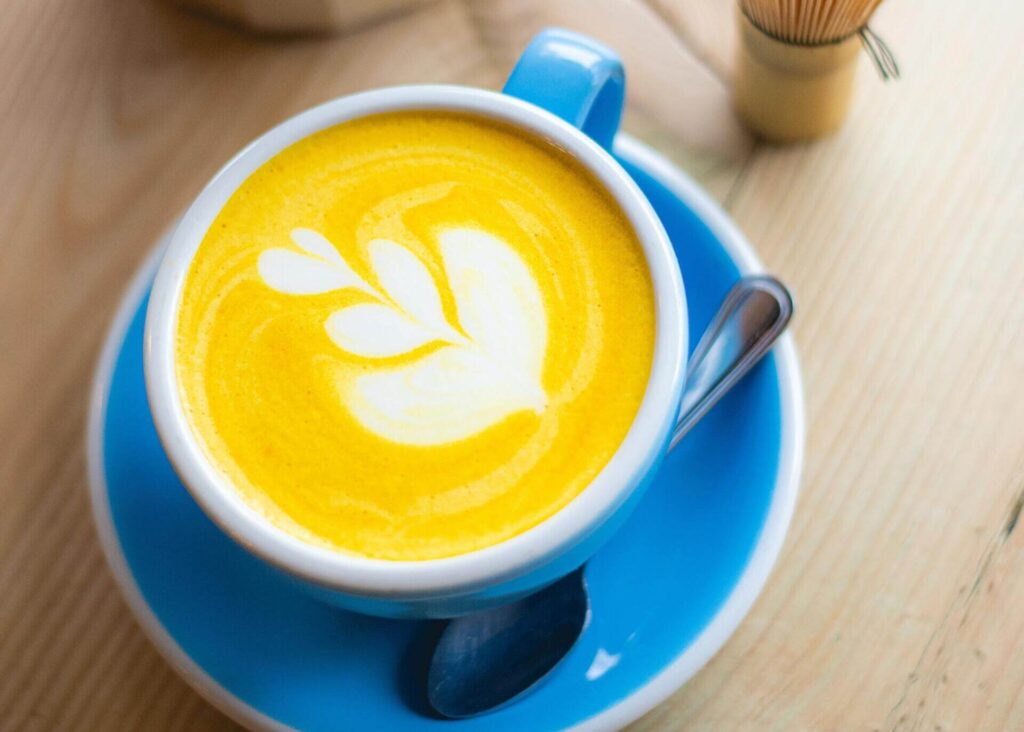
Milk steamer
If you want to keep things simple, you can ask the barista to prepare you a steamer – steamed milk with flavored syrup added to it.
Without the distraction of coffee, trying steamers with different syrups could also be a way to discover the best flavors you can explore further in more complex drinks.
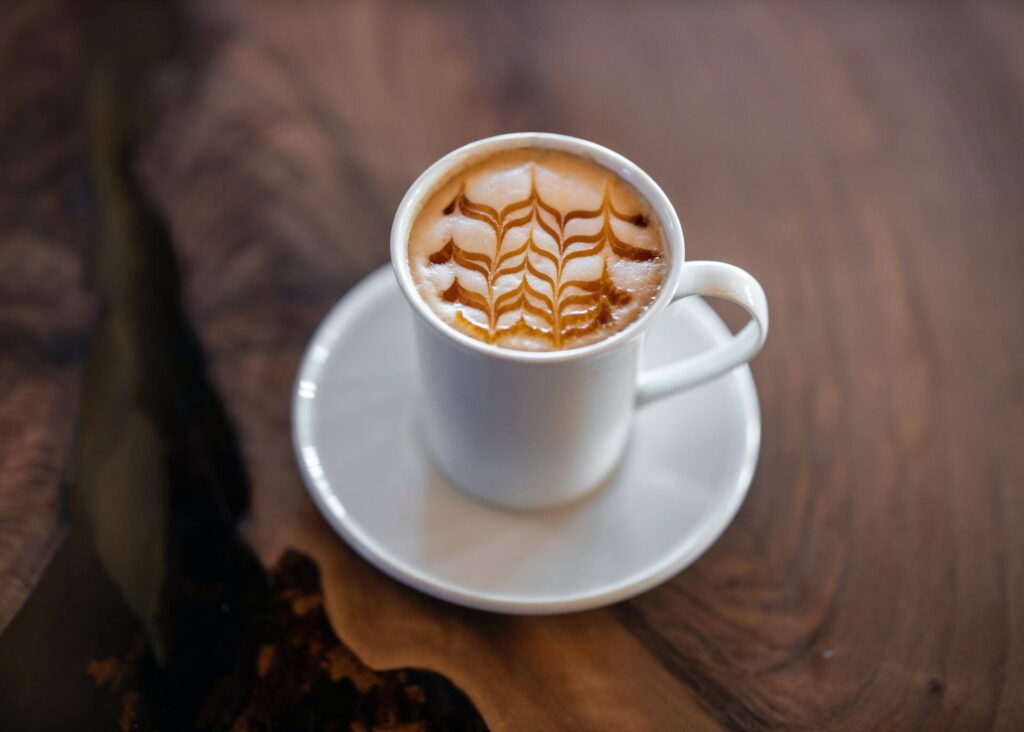
Many people who think they aren’t coffee lovers haven’t discovered the type of coffee beverage that pleases their taste buds. Finding the best option for you might depend on your problem with coffee.
If you want coffee that doesn’t taste burned, one of the many classic drinks that can be made with espresso shots, like lattes and mochas, could solve your problem. Flavored lattes might satisfy your taste buds when you want to get further away from the bitter coffee taste. Even if you don’t become someone who has a regular morning cup of coffee every day, knowing your options beyond black coffee can help you get more out of your next trip to a cafe.
